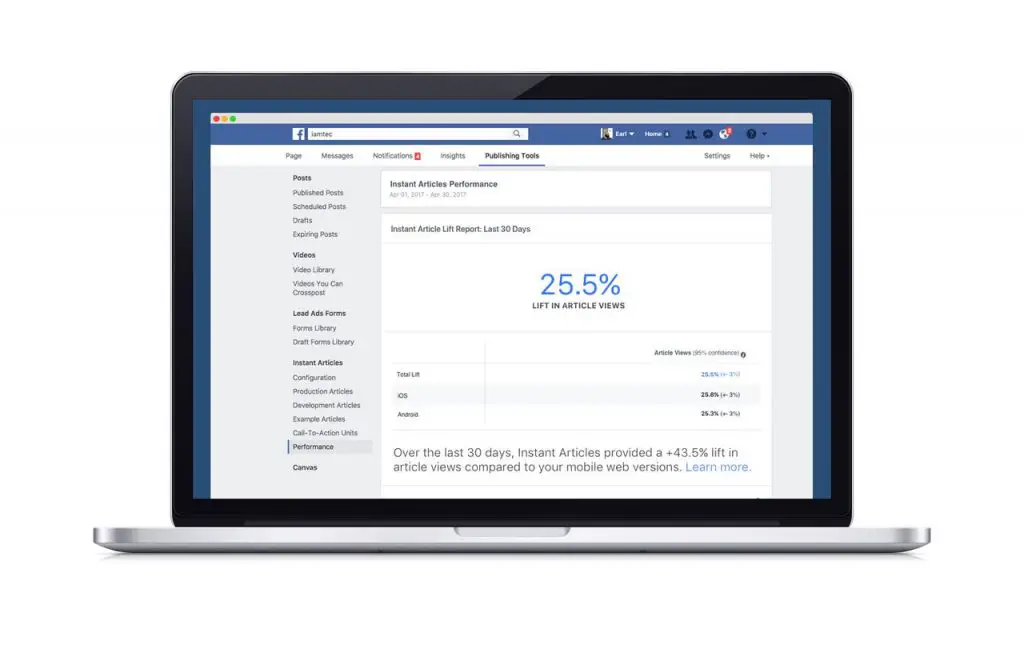Facebook is rolling out a tool for publishers to measure how their Instant Articles perform compared to their mobile web versions.
Facebook launched its fast-loading Instant Articles format back in 2015, and since then, many publishers have started to use it to provide a better mobile experience for their readers. Over time, Facebook has shared the measurement of its Instant Articles across all publishers, but is now giving them a new way to compare performance between their usual mobile web versions and the Instant Articles formatted ones.
The idea is to give publishers the information they need to “make informed business decisions about how they share content on Facebook.” This tool is particularly important for those who feel that their investment in Instant Articles hasn’t returned the results they were expecting. To create the tool, Facebook says it worked with Nielsen to “validate [its] methodology for measuring the traffic lift Instant Articles publishers are seeing.” With Nielsen’s help Facebook’s measurement will be accurate but also impartial in its methodology.

The new measurement tool will only be available to publishers who have enough Instant Articles and mobile web versions of the same articles published – this will allow for the right amount of information to make a comparison possible. Facebook also says that it will add more metrics in the coming months.
There’s no doubt about it: Instant Articles perform great. Users are less likely to bounce and more likely to share Instant Articles because they they load fast, and provide a better experience. Instant Articles also cause users to read more. This might be the general consensus, but with the new tool, publishers are able to better evaluate results based on specific articles. Analysis of the data on Instant Articles shows just how much they impact referral traffic.
You can find the data here, but below are some highlights according to Facebook:
- – Competition for attention in News Feed drives people to easy to consume formats.
- – News cycles often contribute to swings in link traffic overall.
- – Regional differences influence traffic results across regions and markets.
- – Regional variances in mobile traffic are attributed to variables like network connectivity and mobile device.
- – People’s propensity to click on Instant Articles is correlated to the volume of Instant Articles they see from a publisher
At the moment there are over 10,000 publishers around the world using Instant Articles, and around a third of clicks to articles on Facebook are to Instant Articles. But they aren’t just good for traffic. They also have monetisation value. But while Facebook tests new monetisation options, it’s becoming clearer that Instant Articles won’t only play a major part in how publishers distribute their content, but also how they monetise it in the near future.
[box]Read more: Facebook Expands Monetisation Opportunities On Instant Articles[/box]
